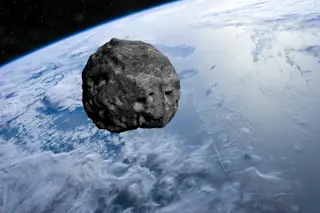A tiny moon rock only two inches across that was picked up by one of the last astronauts to walk on the moon has given researchers new insight into the geological history of Earth’s satellite. The rock, scooped up during the Apollo 17 mission in 1972, is about 4.2 billion years old, and shows evidence that the moon once had a molten iron core that generated a magnetic field in the satellite’s early days. The findings are forcing researchers to rethink the prevailing notion that objects smaller than Mars can’t maintain a stable magnetic field.
Many of the rocks brought back from the Moon have a faint magnetic signal, suggesting that they originally cooled from magma when the Moon had a magnetic field. That was a surprise to many scientists who thought the Moon was too small and too cold to have ever possessed a geomagnetic dynamo where electric currents ...














